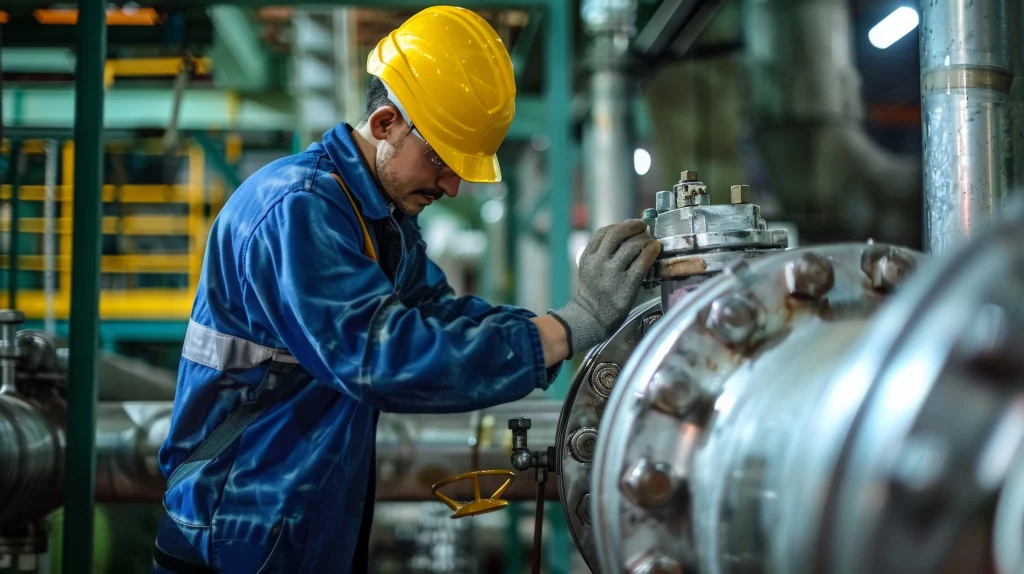
Understanding Industrial High-Pressure Vessel Challenges and Risks
Industrial high-pressure vessel challenges represent critical engineering hurdles across a wide range of sectors, including chemical processing, energy production, refineries, and food manufacturing. These challenges stem from the extreme mechanical stress caused by internal pressures that can exceed thousands of PSI, placing immense force on vessel shells, heads, nozzles, welds, and internal components. Addressing industrial high-pressure vessel challenges requires careful material selection, precise engineering calculations, and strict adherence to inspection protocols and fabrication standards. Without these measures in place, the potential for catastrophic failure significantly increases, making the mitigation of industrial high-pressure vessel challenges essential for operational safety and long-term reliability.
Common High-Pressure Scenarios in Industry
Many industrial processes operate under conditions exceeding 1,500 PSI, presenting significant industrial high-pressure vessel challenges that demand specialized design and engineering. Vessels used in these environments must be capable of withstanding extreme internal forces, often combined with high temperatures, corrosive media, and cyclic loading. This requires robust material selection, precision fabrication, and strict adherence to industry codes such as ASME Section VIII to ensure both performance and safety.
Examples of high-pressure applications:
- Oil & Gas: Downstream refining units, desulfurization reactors, and separators
- Hydrogen Production: Hydrogen embrittlement resistance in high-pressure containment
- Power Generation: Supercritical steam generators and heat recovery steam generators (HRSGs)
- Petrochemicals: Hydrocracking and reforming units operating at elevated temperatures and pressures
- Pharmaceuticals: Sterilization vessels using saturated steam under high pressure
Each of these requires specific solutions tailored to the vessel’s geometry, service type, and location.
Structural and Design Challenges
High internal pressure can lead to rupture, deformation, or fatigue failure if a vessel’s structural design is inadequate—posing serious industrial high-pressure vessel challenges. While the ASME Boiler and Pressure Vessel Code (BPVC), especially Section VIII, sets the foundational standards for pressure vessel construction, high-pressure applications often demand more advanced analysis. Engineers must go beyond basic code compliance, incorporating detailed Finite Element Analysis (FEA), material fatigue assessments, and stress optimization to ensure long-term integrity under extreme conditions.
Major structural considerations:
- Thicker vessel walls: Necessary to resist hoop stress and axial loads
- Advanced head designs: Hemispherical or torispherical heads distribute pressure evenly
- Reinforced nozzle areas: Pad reinforcements prevent weak spots in penetrations
- Support and anchorage systems: Required to resist seismic loads and prevent vessel movement
- Stress analysis: Often requires Finite Element Analysis (FEA) for accurate prediction of performance under pressure
Proper calculations for MAWP (Maximum Allowable Working Pressure) are crucial, as even slight miscalculations can cause dramatic system failures.
Material Challenges Under High Pressure
Material performance is just as critical as geometric design when addressing industrial high-pressure vessel challenges. In many cases, these challenges are compounded by extreme operating conditions such as high temperatures, corrosive environments, and repetitive stress cycling. Selecting the wrong material—even if the geometry is optimized—can lead to embrittlement, cracking, or accelerated degradation over time. To mitigate these industrial high-pressure vessel challenges, engineers must carefully evaluate material properties like yield strength, thermal resistance, corrosion resistance, and fatigue behavior in relation to the vessel’s specific service conditions.
Key materials and why they matter:
- Carbon steel: Low cost but limited in high-temp and high-corrosion environments
- 316L Stainless steel: Ideal for hygienic and corrosive applications (biotech, food)
- Chromoly alloys (e.g., SA-387): Resistant to high temperature and pressure combinations
- Nickel alloys (e.g., Inconel): Excellent for extreme corrosion and heat resistance
- Duplex stainless steels: Balance of strength and corrosion resistance; good for seawater applications
Materials must be ASME-approved and tested for toughness, ductility, tensile strength, and long-term fatigue resistance under load.
Welding and Fabrication Difficulties
Weld integrity is often the most vulnerable point in high-pressure vessel construction, making it a central concern in addressing industrial high-pressure vessel challenges. Poorly executed or inconsistent welds can become initiation points for cracks, fatigue failure, or catastrophic rupture under sustained internal pressure. To overcome these industrial high-pressure vessel challenges, precision welding must be carried out under tightly controlled conditions, using qualified procedures, certified welders, and rigorous inspection techniques such as radiographic testing (RT) and ultrasonic testing (UT). Proper heat treatment, filler material compatibility, and post-weld stress relief are also critical to ensuring weld durability and long-term vessel reliability.
Fabrication complications include:
- Microfissures in heat-affected zones (HAZ): Especially in thick walls or incompatible metals
- Distortion due to residual stress: Requiring post-weld heat treatment (PWHT) to normalize
- Inaccessibility of internal welds: Demands the use of automated or remote welding tools
- Welding procedure qualification: Must follow stringent ASME Section IX guidelines
Only experienced welders and certified procedures should be used for high-pressure vessels. Weld records and qualifications are non-negotiable.
Inspection and Testing Requirements
Verification of strength, consistency, and safety is paramount when addressing industrial high-pressure vessel challenges. Unlike standard vessel designs, high-pressure systems are subjected to far more demanding inspection and testing protocols to ensure they can withstand extreme operational conditions without failure. These may include hydrostatic and pneumatic pressure tests, advanced non-destructive examination (NDE) methods like ultrasonic testing, radiography, magnetic particle inspection, and dye penetrant testing. Each inspection stage plays a critical role in confirming material integrity, weld quality, and dimensional accuracy—ensuring that the vessel meets all applicable safety codes and performance standards before it enters service.
Typical testing methods:
- Hydrostatic pressure testing: Uses water at 1.3–1.5x MAWP to confirm leak-free integrity
- Radiographic Testing (RT): Detects internal defects in butt welds
- Ultrasonic Testing (UT): Measures thickness and detects hidden cracks or voids
- Magnetic Particle Testing (MT): For surface flaws in ferromagnetic materials
- Dye Penetrant Testing (PT): Reveals surface-breaking defects in non-ferrous materials
In some high-pressure applications, real-time digital radiography or phased-array UT may be used for greater resolution and data recording.
Safety Risks and Preventive Measures
When managing industrial high-pressure vessel challenges, safety must always be the foremost priority. Failures under extreme pressure conditions can result in catastrophic consequences, including equipment destruction, hazardous material release, environmental damage, and loss of life. The energy stored within high-pressure systems makes even minor design or fabrication flaws potentially devastating. To mitigate these risks, every phase—from initial engineering and material selection to welding, inspection, and maintenance—must be guided by a safety-first mindset and strict adherence to regulatory standards such as ASME, API, and PED.
Potential risks:
- Shell rupture explosions due to overpressurization
- Toxic or flammable leaks endangering workers and nearby equipment
- Blast damage from flying fragments and shockwaves
- Undetected cracks or corrosion causing slow deterioration and sudden failures
Preventive measures:
- Overpressure relief devices: Spring-loaded safety valves, rupture disks
- Redundant monitoring systems: Pressure transmitters, alarms, emergency shutdowns
- Regular re-certification and inspection: Scheduled per NBIC and ASME codes
- Operator training: Teams must understand operational limits and emergency response
- Third-party review: Engineers often engage outside auditors to double-check design under ASME Division 3 rules
High-Pressure Design
The complexities of industrial high-pressure vessel challenges demand more than sound design principles—they require engineering foresight, disciplined fabrication methods, and uncompromising quality control. In high-stakes industries such as oil and gas, power generation, and chemical processing, even minor design flaws can lead to catastrophic failure, environmental risk, or costly downtime.
Successfully navigating industrial high-pressure vessel challenges involves a meticulous approach to stress analysis, material selection, welding procedures, and inspection protocols. Each step must be aligned with industry codes—such as ASME BPVC—and tailored to withstand the specific pressures, temperatures, and chemical exposures of the application. When executed correctly, this rigorous process ensures not only structural integrity but also long-term reliability, operational safety, and full regulatory compliance.
Need a reliable partner?
Red River specializes in the design and manufacturing of pressure vessels. We also fabricate related items such as prefabricated spools and skid packages.
Reach out to us today and experience the Red River difference. Where American-made products and American Values come together, we care more.
Frequently Asked Questions
1. What pressure levels qualify as high-pressure in industrial processing?
Generally, vessels operating above 1,500 psi are considered high-pressure. However, industry standards may define thresholds differently depending on use.
2. What types of pressure vessel failures are most common at high pressure?
Failures include weld cracking, head deformation, and wall rupture—often caused by stress concentration, fatigue, or corrosion.
3. How often should high-pressure vessels be inspected?
It depends on service type and code requirements. Many high-pressure vessels undergo inspection every 1–3 years, sometimes more frequently.
4. Can older vessels be retrofitted for high-pressure service?
Only after rigorous assessment. Retrofitting involves checking wall thickness, weld quality, and upgrading relief devices.
5. Are certain industries more prone to high-pressure vessel challenges?
Yes—chemical, oil & gas, hydrogen, and power sectors often deal with extreme conditions requiring specialized engineering.
Key Takeaways
- High-pressure challenges in industrial pressure vessel processing require engineering excellence from design to deployment.
- Pressure levels, wall thickness, head shape, and reinforcement areas must be carefully calculated.
- Material selection and welding practices greatly influence long-term vessel integrity.
- Inspection, testing, and safety measures are vital for safe and compliant operation.
- Working with a trusted, ASME-compliant fabricator ensures confidence in the most demanding applications.
